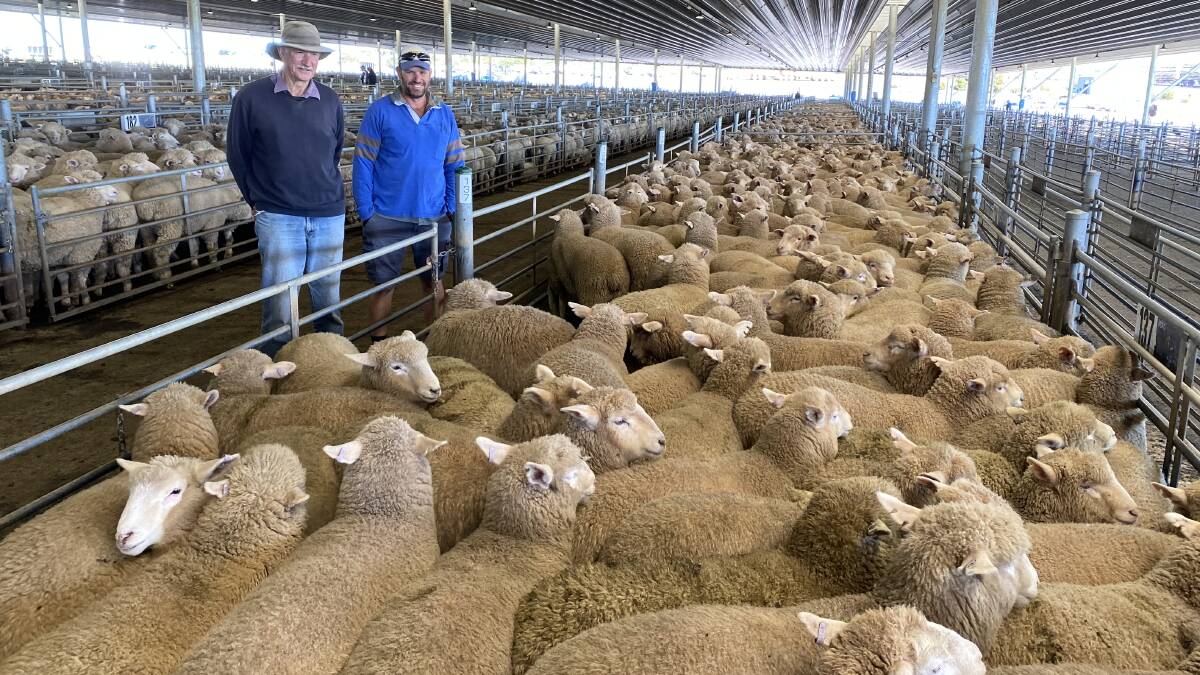
Victoria's significant contribution to southern Australia's spring lamb flush will see yardings peak in late November or early December.
Subscribe now for unlimited access to all our agricultural news
across the nation
or signup to continue reading
And while there is still uncertainty surrounding exactly what numbers will peak at, there's a general consensus in the industry that Victoria's processing capacity needs to be increased to be able to absorb it.
Thomas Elder Markets commodity market insights manager Matt Dalgleish said historically, spring lamb numbers have peaked at 275,000 head a week.
Mr Dalgleish said that peak was largely driven by Victorian saleyards, and this year would be no different.
"In terms of annual lamb yardings, Victoria and NSW consistently have the biggest numbers," he said.
"But NSW throughput tends to have more of a sideways pattern throughout the year, you still get an elevation in spring but nowhere near the magnitude you see in Victoria."
He said Victorian yardings went from around 50,000 a week early in the year, to 30,000 in winter, to 130-140,000 in spring, whereas NSW yardings fluctuated from 80,000-120,000 head a week for most of the year.
When it came to SA, he said yardings there were seasonal like Victoria but their spring lamb peak occurred slightly earlier.
"SA have a similar pattern to Victoria with a significant increase in spring, but their broader numbers aren't as big as Victoria's," he said.
"SA peaks in November, where they go from about 15,000 a week through winter to about 35,000 a week in spring."
Mr Dalgleish said last year's numbers peaked at 260,000 head a week, slightly off the historical average of 275,000.
And he predicted this year's peak would be similar to last year's, if not slightly higher.
"By all accounts, lamb marking rates are quite good, and that does bode well for big numbers," he said.
"But without doing a survey of how many ewes have had lambs and how many have survived, it's tricky to get an exact figure of what we're expecting.
"We might see higher numbers than last year but there will be some constraints as NSW turned off a lot of sheep last year because of the drought."
Riverina Livestock Agents director James Tierney predicted that spring lamb yardings would peak in mid-November.
Mr Tierney believed yardings would be as big, if not bigger, than last year, particularly out of Victoria and NSW.
He said there were only two factors he believed could reduce the supply influx that was on its way - "if the price is completely decimated or if producers opt to shear a lot more than they normally would".
But he believed there were more reasons why there would be more lambs coming through the yards.
"One thing that's going to be different this year to previous years is in NSW, particularly in northern NSW, there will still be plenty of good, later-drop lambs that in the past few years have had to be shorn because they haven't been good enough," he said.
"And there are a lot of areas densely populated with lambs that are still to come."
Mr Dalgleish believed how the price behaved through spring and how the export market fared would determine how long producers decided to hold onto their lambs.
"Earlier in the season the heavy lamb market saw some price weakness as COVID-19 disrupted both processor capacity and export demand," he said.
"Exports seem to be getting back on track, but the Victorian processor capacity is crucial come mid-October onwards."
He said the impact an ongoing reduced processing capacity would have to the industry would be significant.
"NSW and SA have been picking up some of the slack in the last couple of months," he said.
"Slaughter numbers in NSW have been around 115,000 a week for the last eight to nine weeks and that's well above their average.
"But if we don't have the Victorian processors at capacity to process these numbers coming through, there's not going to be enough spare capacity in other states, nor will there be the workforce within abattoirs in those states big enough to take the slack."
He said we would begin to see a backlog of stock if Victoria's processing capacity wasn't increased to at least 80 per cent in the next three to four weeks.
"If we're going to see roughly a similar amount of lambs presented this year to last year, and Victorian abattoirs aren't operating at full capacity, then a backlog of 100,000 head wouldn't be out of the question," he said.
"If we got to a situation where there's not enough kill space across the eastern seaboard, that would mean implications for price at the saleyard when those numbers are coming through because processors won't be as aggressive in their buying."
He said you could look at what happened in the US in April when processors shut down because of COVID-19 cases and caused a backlog.
"When they had backlogs because of processor closures, cattle prices at the saleyard dropped 20 per cent and pig prices dropped about 50pc," he said.
"While these were for different species and also the impact was much broader with processors across the country closed not just one state like over here, it does give you an indication of what a worst case scenario might be."
Start the day with all the big news in agriculture. Sign up here to receive our daily Farmonline newsletter.


